In early September, a unique summer visitor to Aotearoa begins to grace our shores, migrating from the tropics. The pīpīwharauroa (shining cuckoo) certainly make an impression with their intriguing behaviours.
From unusual breeding strategies to quirky culinary tastes, here are 5 curious facts about the shining cuckoo.
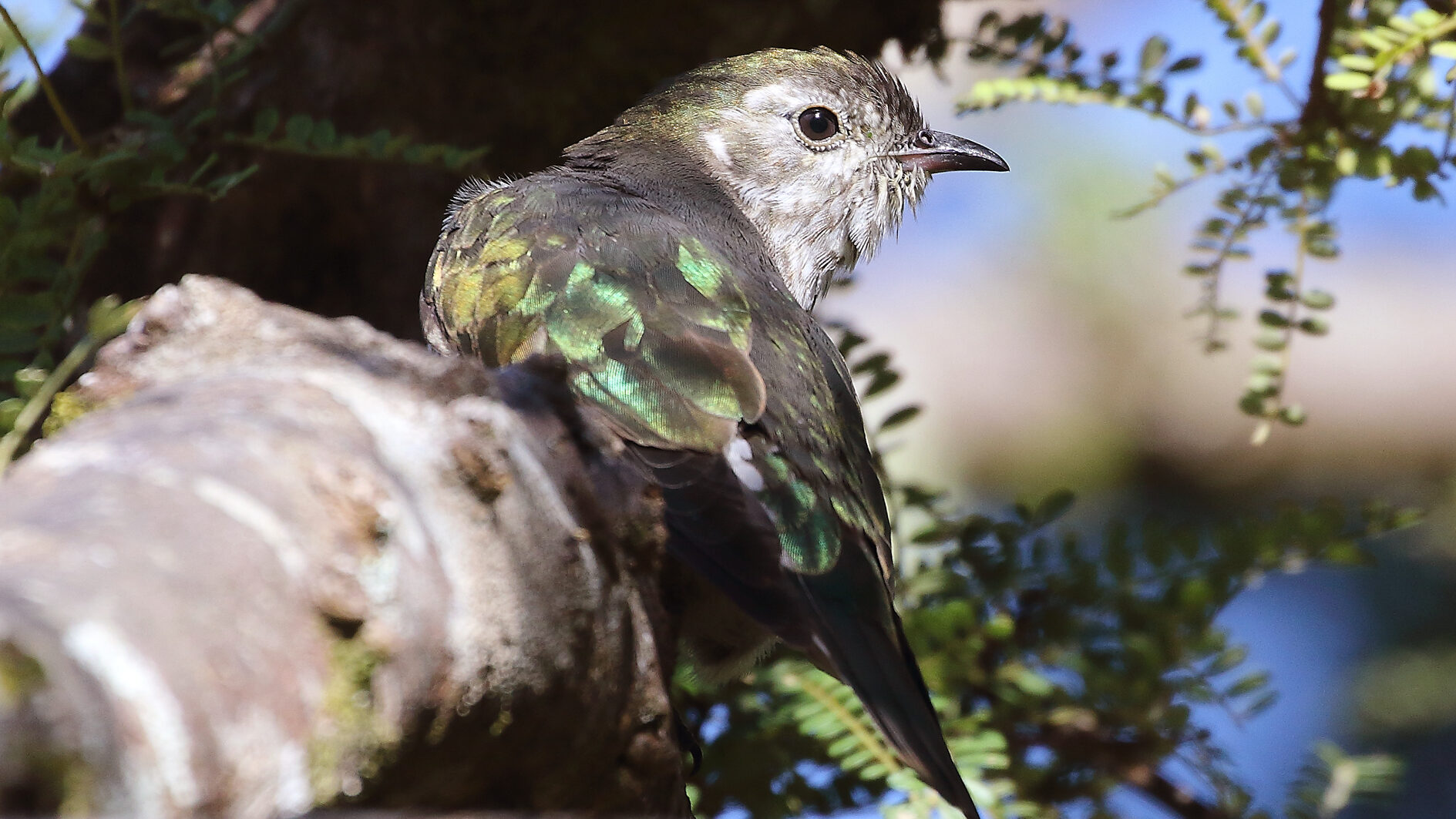
1. You won’t see a shining cuckoo raising chicks
Like other cuckoo birds, shining cuckoos are brood parasites, meaning they lay eggs in the nests of other birds – primarily our native grey warblers/riroriro. The unsuspecting grey warbler isn’t aware of the imposter egg and will accept it and raise the chick as its own.
Once hatched, the cuckoo chicks may get rid of any eggs or young grey warbler chicks in the nest by pushing them out. After removing the competition, the cuckoo hatchling will mimic the call of a grey warbler chick demanding food from its obliging ‘foster’ parents.
As for the Grey Warblers? They usually have two clutches of chicks per season. Often, they manage to raise their first brood before the shining cuckoos arrive in New Zealand. It is the grey warbler’s second brood that the shining cuckoo targets.
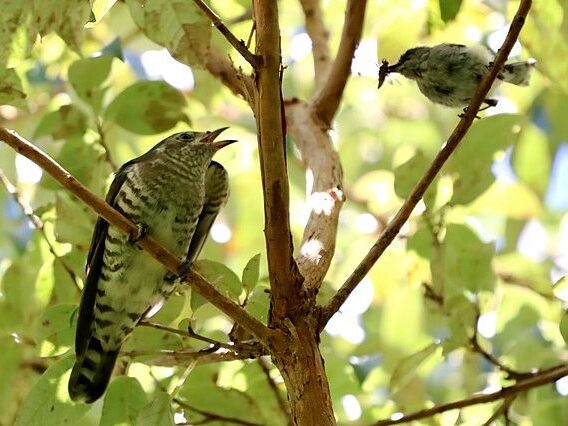
2. Small cuckoo, big burden (to its foster parents!)
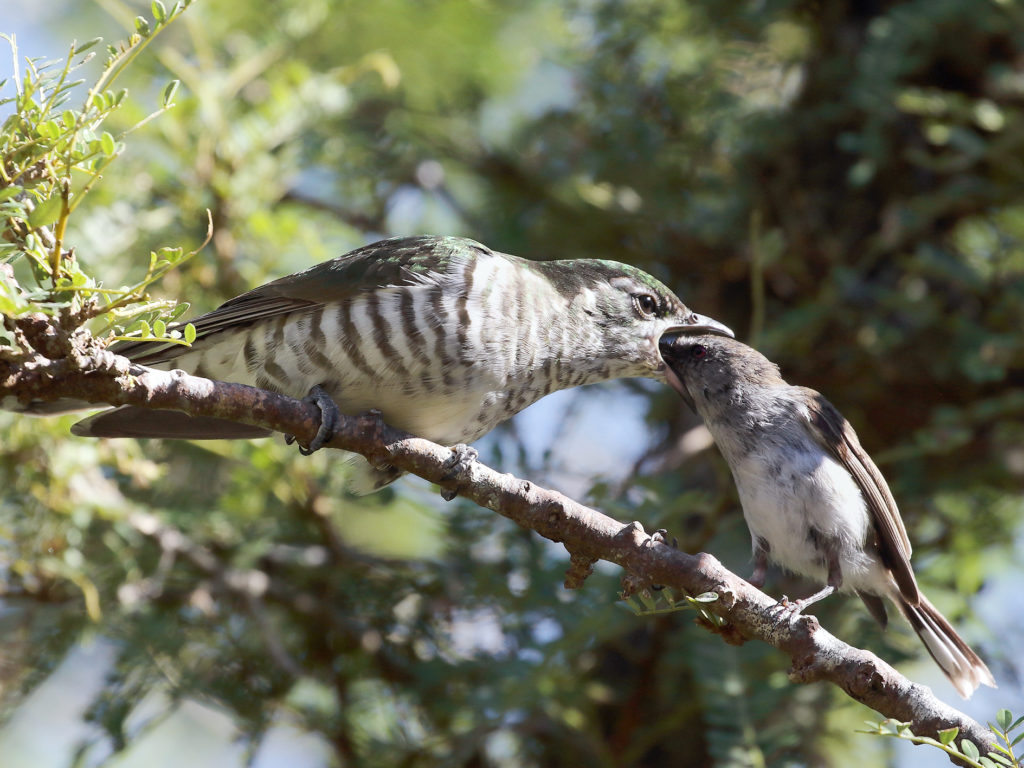
The shining cuckoo is the world’s smallest cuckoo, but by adulthood, it dwarfs its tiny grey warbler foster parents. Adult shining cuckoos weigh four times the size of grey warblers and are double their length.
As you can imagine, collecting food for a comparatively enormous cuckoo chick keeps both grey warbler parents busy. For several weeks after leaving the nest young cuckoo chicks are still dependent on their foster parents for food.
3. Shining cuckoos are susceptible to a number of human-caused dangers
Sadly, often a person’s first encounter with a shining cuckoo is when they’re injured from flying into a glass window. These injuries from window strike can be fatal but there are ways to prevent it. By applying window decals that are barely visible to the human eye, you can help birds to see the glass and avoid flying into it.
Another danger for the shining cuckoo is introduced predators such as rats and possums. Help make your neighbourhood safe for our special summer visitors by setting traps in your backyard and getting involved with your local trapping group.
While they forage for insects, shining cuckoos can often fall prey to cats. If you have a pet cat, we have some steps you can take to protect the shining cuckoo and other birds in your neighbourhood.
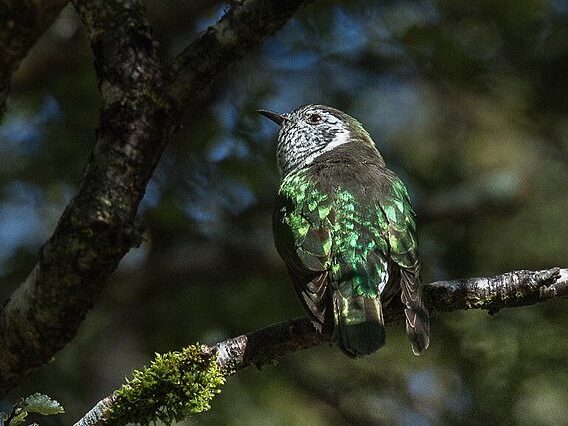
4. The travel path of shining cuckoos may have helped ancestors of Māori discover New Zealand
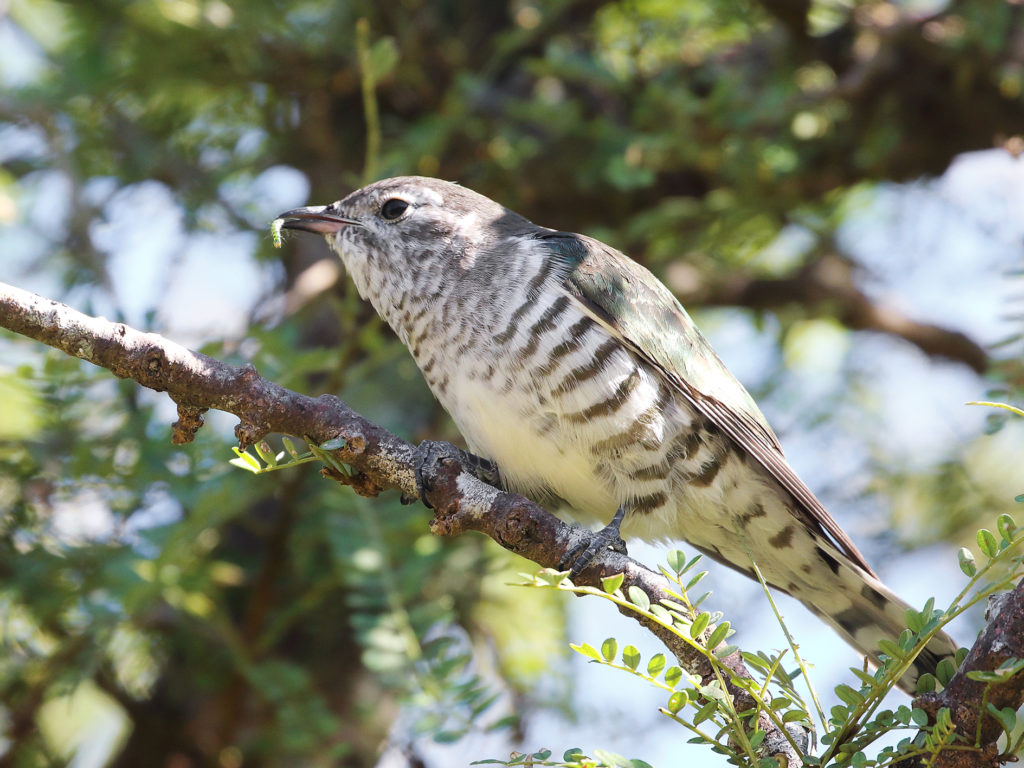
Ancestors of Māori observed the shining cuckoo and long-tailed cuckoo flying south from Polynesian and Melanesian islands every spring and then returning in autumn. This may have led them to suspect that these birds were flying to land in the south-west Pacific.
The migration patterns of birds were definitely being monitored by navigators around this period. In fact, navigators were using the migratory flight of the West Polynesian pigeon to guide their journeys between Tonga and Samoa.
5. The shining cuckoo eats insects that are toxic to other birds
Shining cuckoos have a thick mucous membrane that lines their gizzard, enabling them to eat hairy caterpillars that are toxic to most birds.
The toxic hairs are embedded in the membrane and then parts of the membrane are shed and regurgitated removing the toxic hairs.
Shining cuckoos can even eat monarch caterpillars which contain cardiac glycosides, a powerful toxin that impacts heart function.
It is still not fully understood how shining cuckoos have an immunity to these toxins.
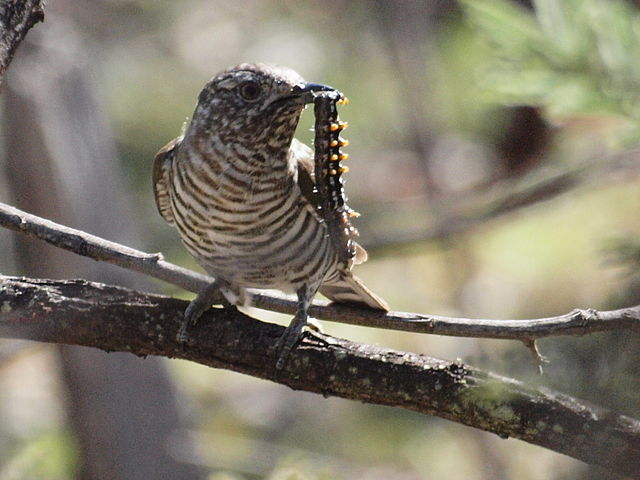
Want to help a shining cuckoo out?
If you’d like to see more of these quirky cuckoos flitting about in your local community, the best way to help is by making your neighbourhood safe.
You can do this by setting traps in your backyard or getting involved with your local trapping group.

